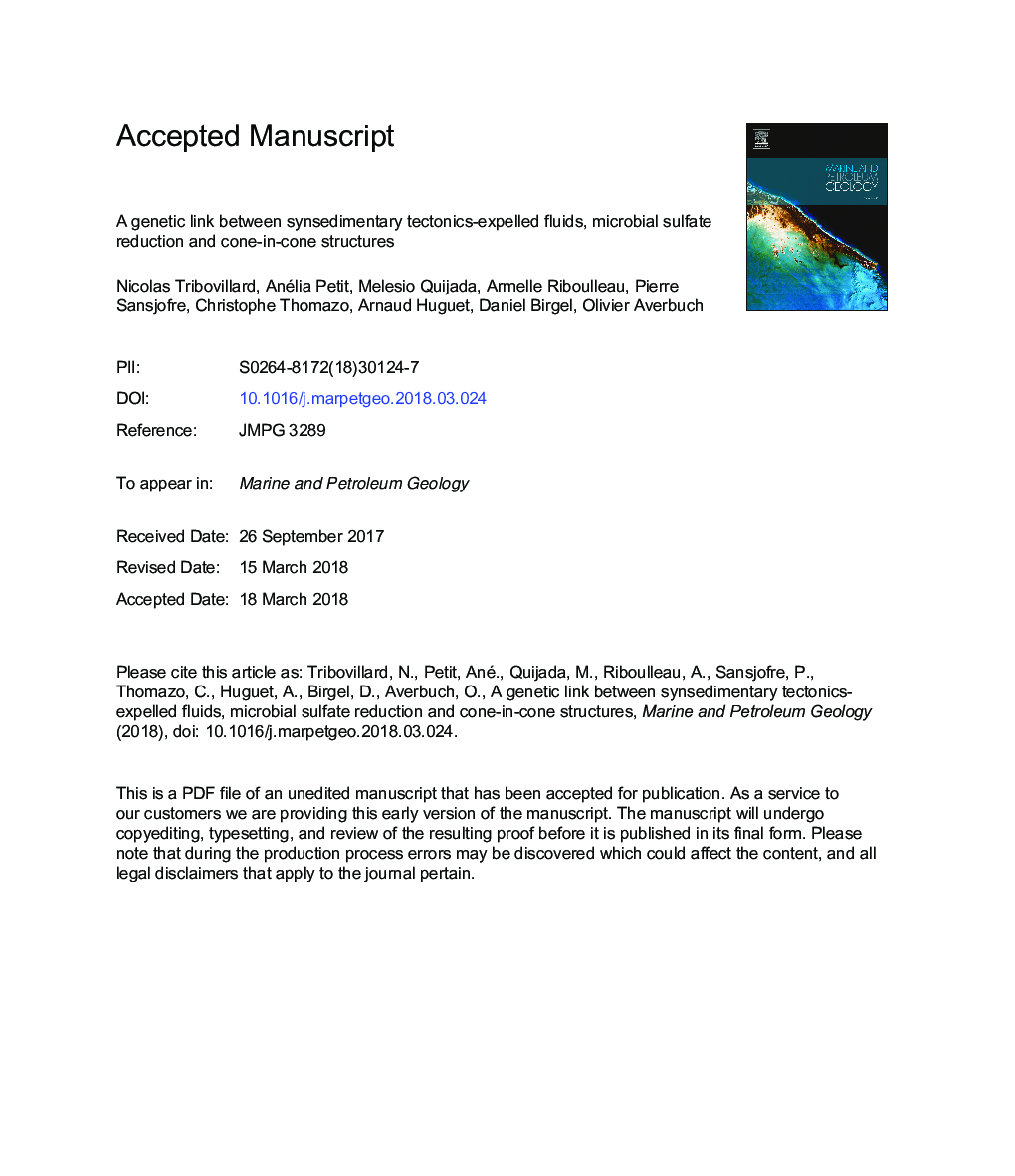| Article ID | Journal | Published Year | Pages | File Type |
|---|---|---|---|---|
| 8909116 | Marine and Petroleum Geology | 2018 | 37 Pages |
Abstract
The late Jurassic (Tithonian) marlstones of the Boulonnais area (English Channel, France) contains diagenetic carbonate beds and nodules. Some nodules exhibit cone-in-cone structures on their lower face. We studied such nodules using various techniques of imaging and chemical (major and trace-elements) and isotopic analyses (Ccarb, Corg, O and S stable isotopes). We interpret the cone-in-cone to be the end product of carbonate-nodule formation during early diagenesis. The diagenetic carbonate precipitation was induced by microbial activity (bacteria and(?) archeae) fueled by upward-migrating fluids. Fluid expulsion was itself triggered by synsedimentary fault movements. Under such circumstances, cone-in-cone structures can form during early diagenesis as the result of bacterially-mediated sulfate reduction, possibly coupled to sulfate-dependent anaerobic oxidation of methane. This genetical scheme may be transposed to many other settings.
Related Topics
Physical Sciences and Engineering
Earth and Planetary Sciences
Economic Geology
Authors
Nicolas Tribovillard, Anélia Petit, Melesio Quijada, Armelle Riboulleau, Pierre Sansjofre, Christophe Thomazo, Arnaud Huguet, Daniel Birgel, Olivier Averbuch,
